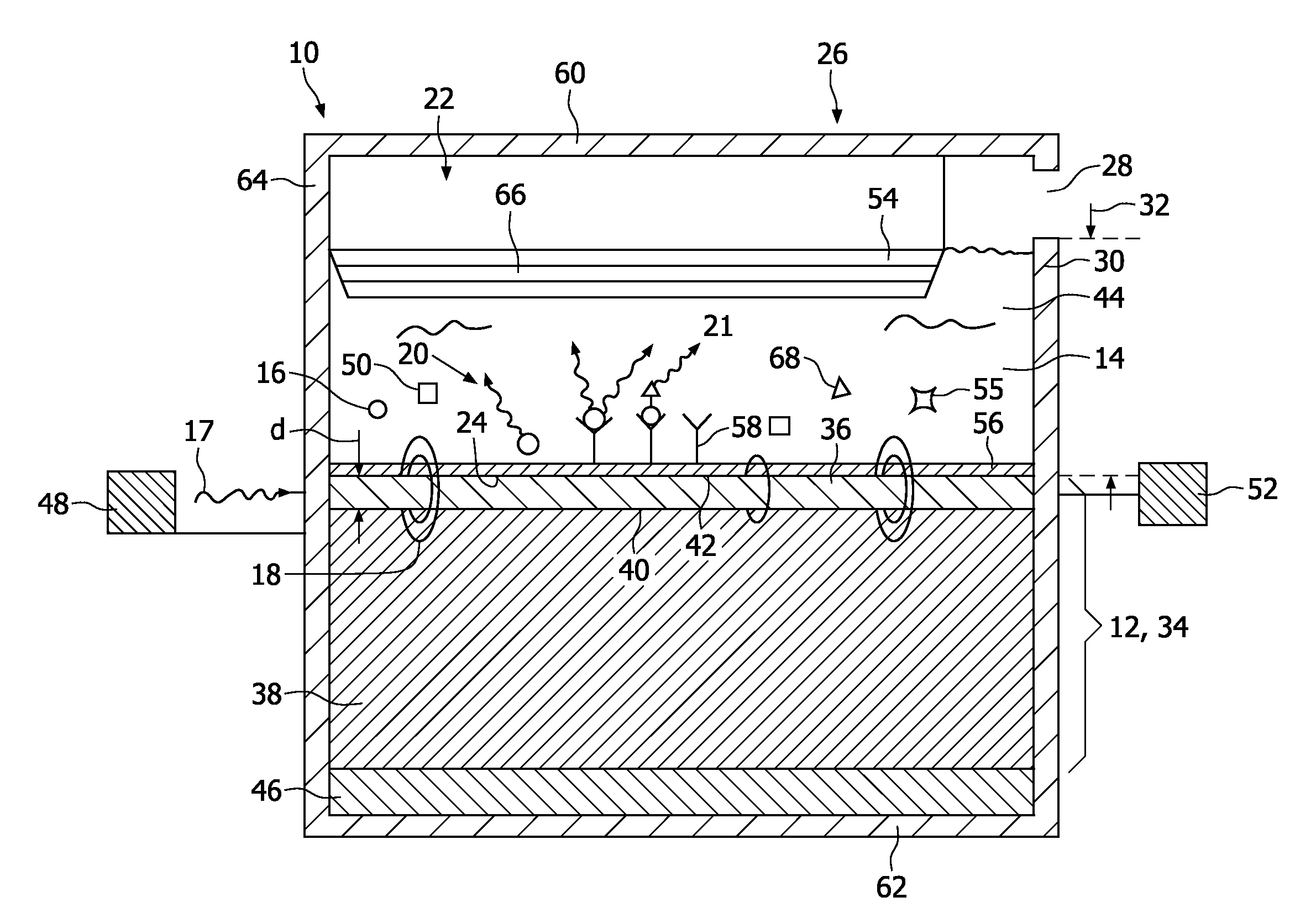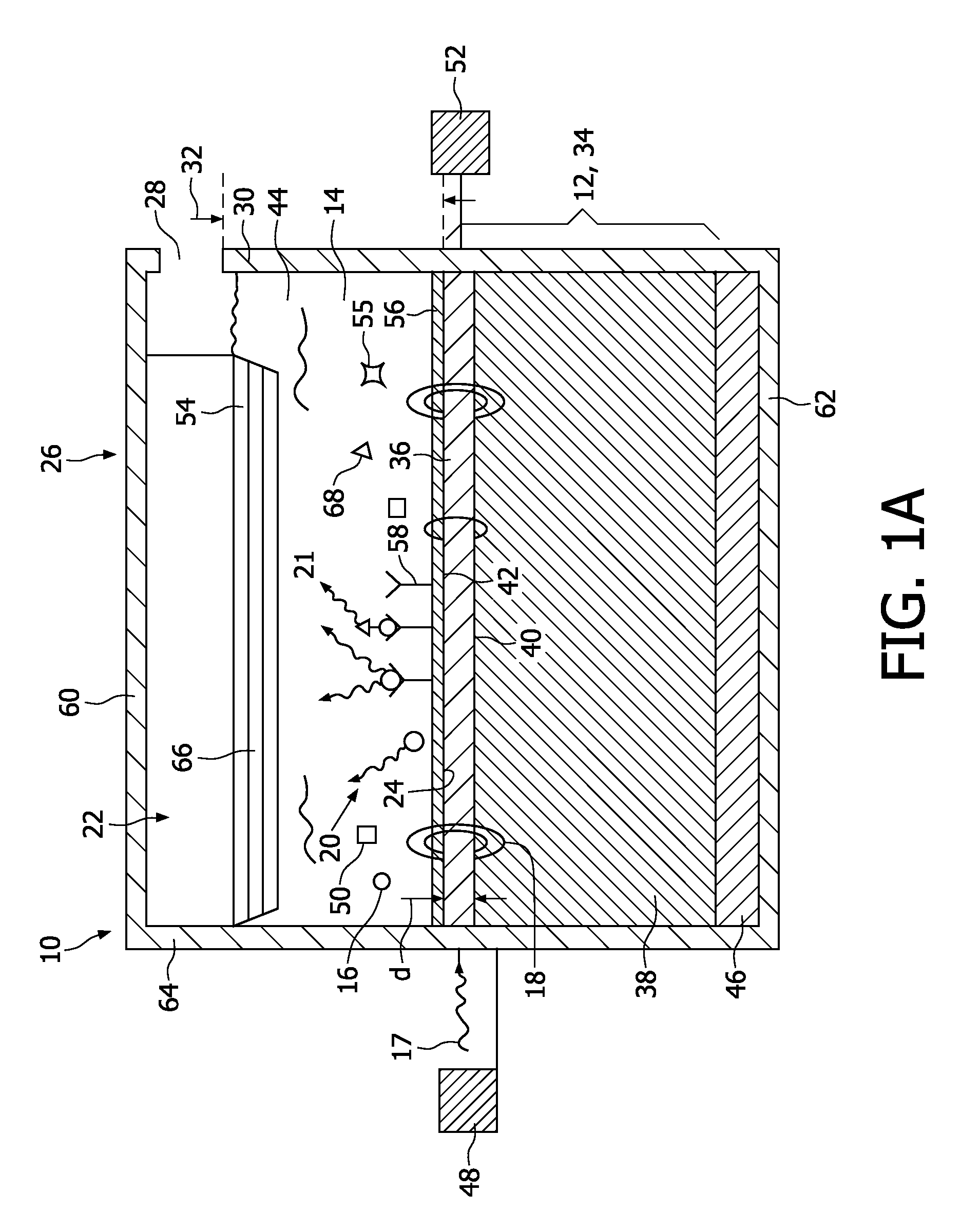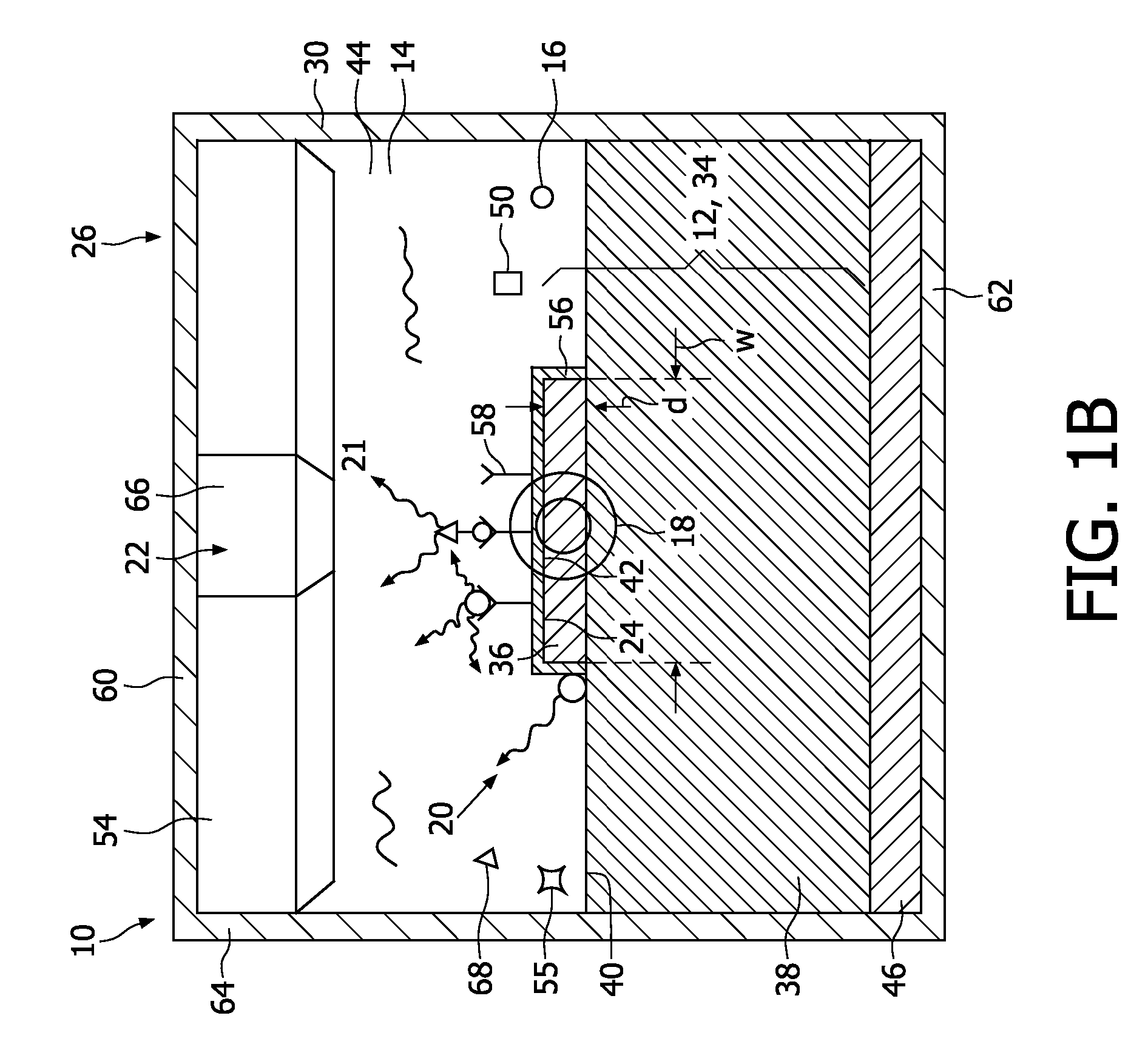Biosensor device and method for detecting molecules in an analyte
a biosensor and analyte technology, applied in the direction of chemiluminescene/bioluminescence, instruments, material analysis, etc., can solve the problems of high production and operating costs of this biosensor device, high measurement principle and design complexity, and achieve the effect of simple detection principle and high sensitiveness
- Summary
- Abstract
- Description
- Claims
- Application Information
AI Technical Summary
Benefits of technology
Problems solved by technology
Method used
Image
Examples
Embodiment Construction
[0061]FIGS. 1A and 1B show a biosensor device 10 in a schematic representation. The biosensor device 10 is used to detect molecules such as biomolecules like DNA in an analyte, where the detection sensitivity of the biosensor device 10 can be increased based on the magnetic or electric properties of the molecules to be detected.
[0062]According to the invention, the term “molecules” generally refers to molecules, beads and particles which are comprised in the analyte.
[0063]The biosensor device 10 comprises a binding element 12 that can be brought into contact with the analyte 14 for binding the molecules 16 in the analyte 14. Diffusion causes the molecules in the analyte 14 to move towards and away from the binding element 12 for binding to the binding element 12. Light 17 is applied to the binding element 12 providing excitation light 18 for the molecules 16 located around the binding element 12, as the excitation light 18 is concentrated around the binding element 12. Upon binding ...
PUM
| Property | Measurement | Unit |
|---|---|---|
| refractive indices n1 | aaaaa | aaaaa |
| thickness | aaaaa | aaaaa |
| thickness | aaaaa | aaaaa |
Abstract
Description
Claims
Application Information
 Login to View More
Login to View More - R&D
- Intellectual Property
- Life Sciences
- Materials
- Tech Scout
- Unparalleled Data Quality
- Higher Quality Content
- 60% Fewer Hallucinations
Browse by: Latest US Patents, China's latest patents, Technical Efficacy Thesaurus, Application Domain, Technology Topic, Popular Technical Reports.
© 2025 PatSnap. All rights reserved.Legal|Privacy policy|Modern Slavery Act Transparency Statement|Sitemap|About US| Contact US: help@patsnap.com



